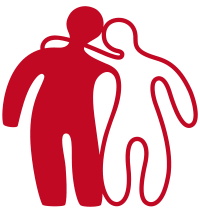Translations
Finish, English, German, Spanish, Turkish, France, Litthuania, Bosnia, Russian, Persian, Arabic.
Swedish Bleeding Disorder Society
The Swedish Hemophilia Society was founded in 1964 and the society is a member of WFH since 1968. We change our english namn in october, 2020 to Swedish Bleeding Disorder Society. Our Royal Majesty, Queen Silvia, is the Patron of the Society. Swedish Bleeding Disorder Society is a non-profit nation wide organisation for persons with Hemophilia, von Willebrands Disease, ITP and other bleeding disorders. Most members have some form bleeding disorder, others are either relatives/family or support members.
The goal of the Society is;
To retain the interest of persons with bleeding disorder in the society.
To offer guidance and support to its members.
To disseminate knowledge about bleeding disorder
To strive for the qualified medical care and treatment for persons with bleeding disorder.
In order to obtain better living conditions for persons with bleeding disorders the Society actively co-operates with other authorities and associations. The Society is a member of the Swedish Disability Movement as well as being a member of international organisations for the care of persons with Hemophilia. An important part of the Society’s work is not only to promote the interests of persons with bleeding disorder, but also to let others take part of the Society’s knowledge and expertise. This is mostly done by influencing the public opinion in various ways.
The Society not only regularly participates in fairs and conferences but also arranges theme-days about bleeding disorders. The member magazine “Gensvar” is issued four times a year and is distributed in a large edition. The magazine includes information about healtcare, treatment and the work of the Society. The Society also produces several pamphlets about bleeding disorders throughout the year.
The Arosenius Fund
The Arosenius fund was established in 1994 with the purpose to support research and development in aid of persons with hemophilia. The fund is named after the artist Ivar Arosenius who suffered from hemophilia and died young, only thirty years old, because of the disease. His art reflects his life as a hemophiliac at the beginning of the century.
Aside from supporting fundamental hemophilia and gene therapy research the Arosenius Fund is also supporting projects that advance qualified care and treatment of hemophilia. This includes lectures and participation in presentation of research results. The board of the fund includes representatives of the medical profession and genetic research as well as representatives of the Swedish Hemophilia Society.
Sweden has a well-reputed tradition in clinical research in the field of Hemophilia. In the fifties one of the first factor concentrates was developed by Inga-Marie Nilsson and Birger and Margareta Blombäck. What these pioneers started has since been expanded into a diversity of areas such as basic research and treatment development. In Sweden, all persons with severe hemophilia have access to prophylaxis and home treatment from an early age.
International cooperation
Sweden is a rich country with a long tradition of humanitarian aid to the developing world. We are aware of the tragic fact that most of the people with hemophilia around the world have no or little access to modern medicine and treatment. That is why we are involved in the twinning program of the World Federation of Hemophilia. Our Society has a HOT-twinning program with Nepal Hemophilia Society since 1999 and the Hemophilia Centers in Stockholm and Malmö have been twinning with Hemophilia Centers in Estonia and Lithuania.
Swedish/Nordic guidelines for the care and treatment of haemophiliacs can be found here:









